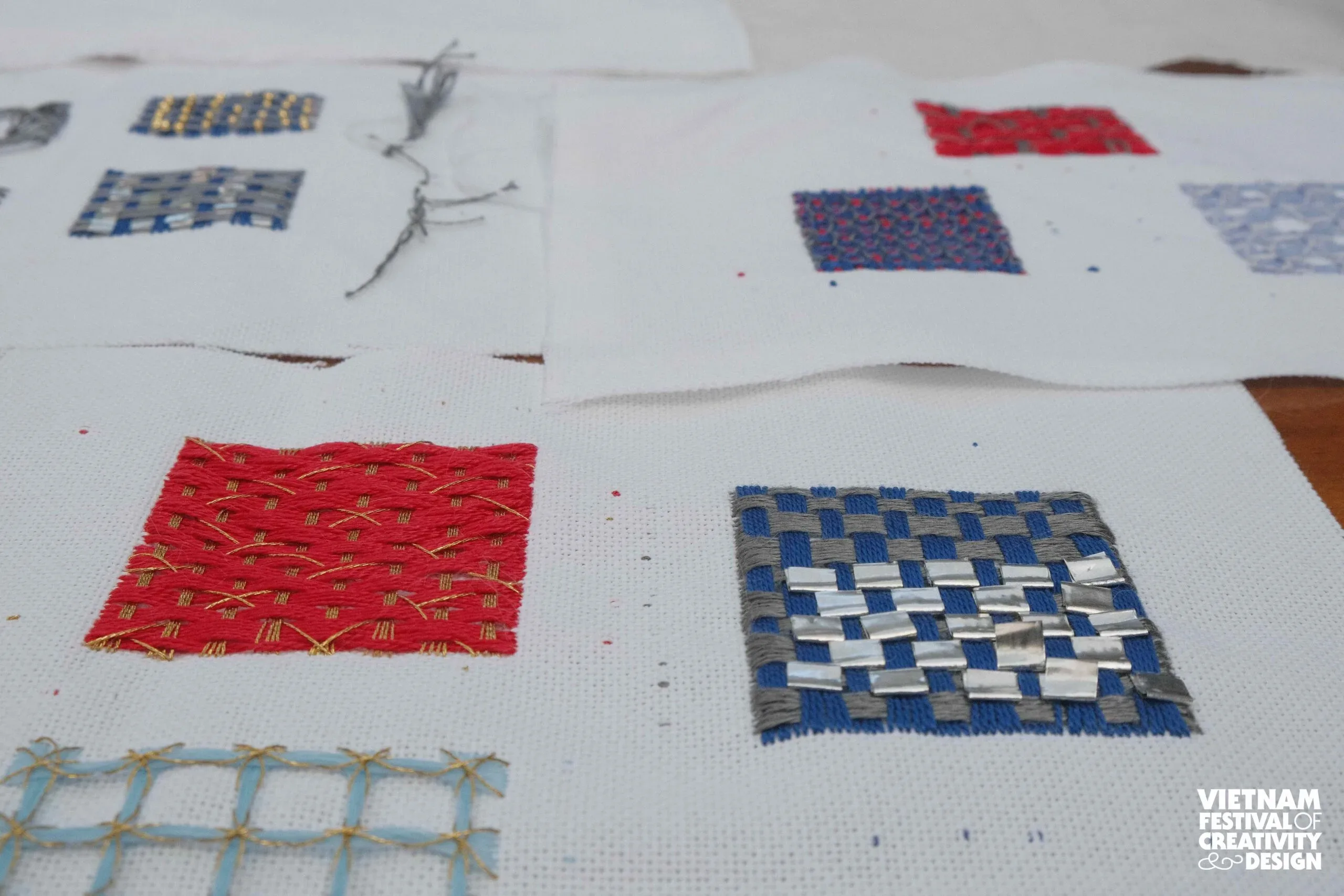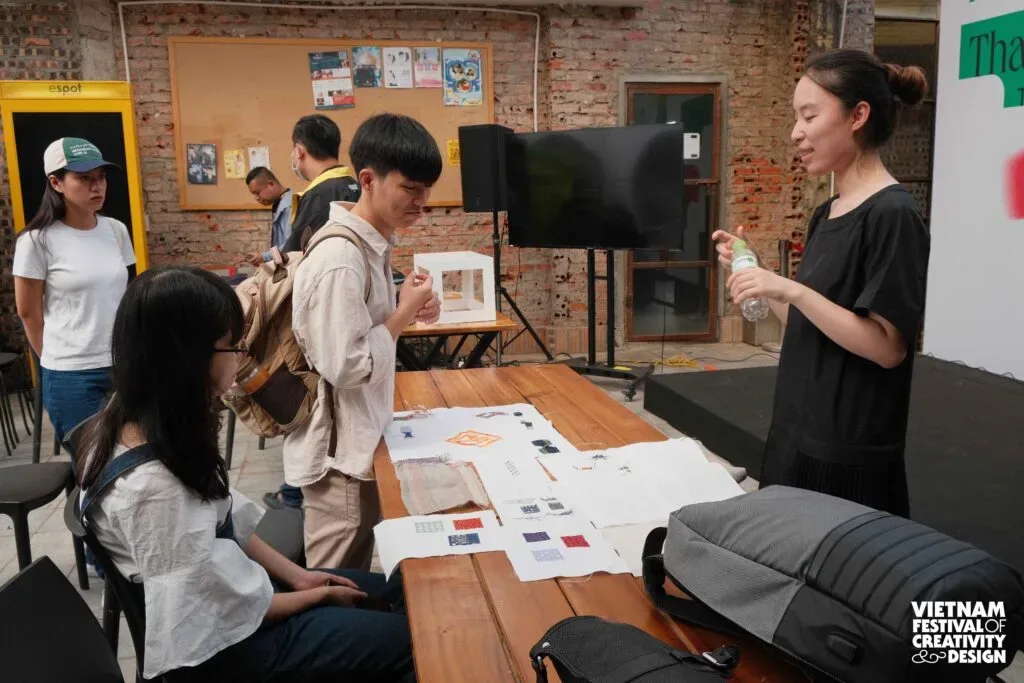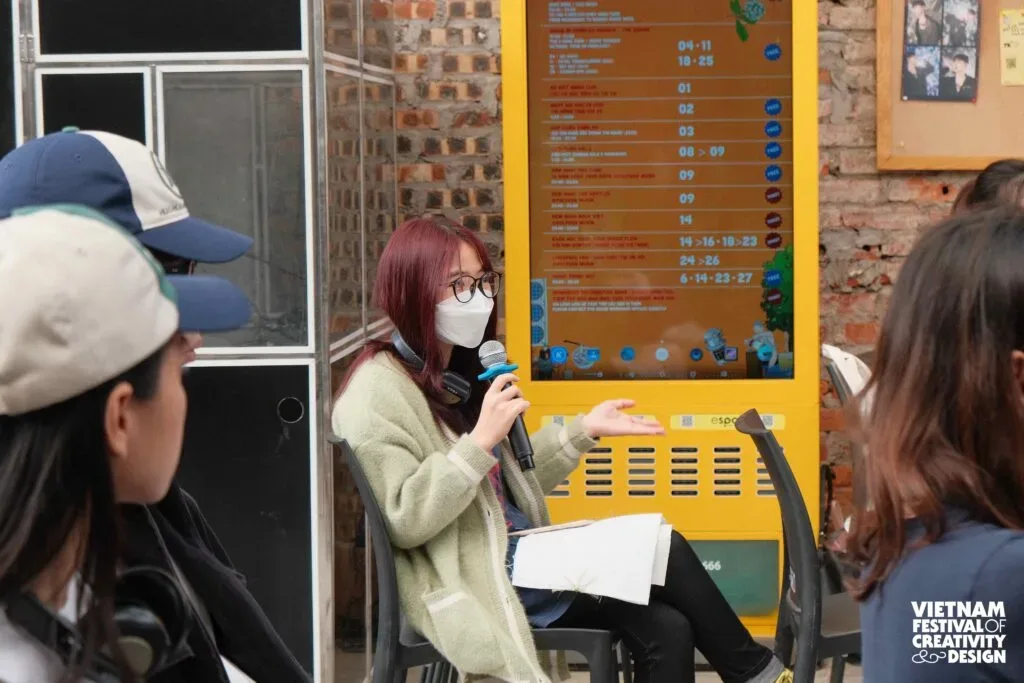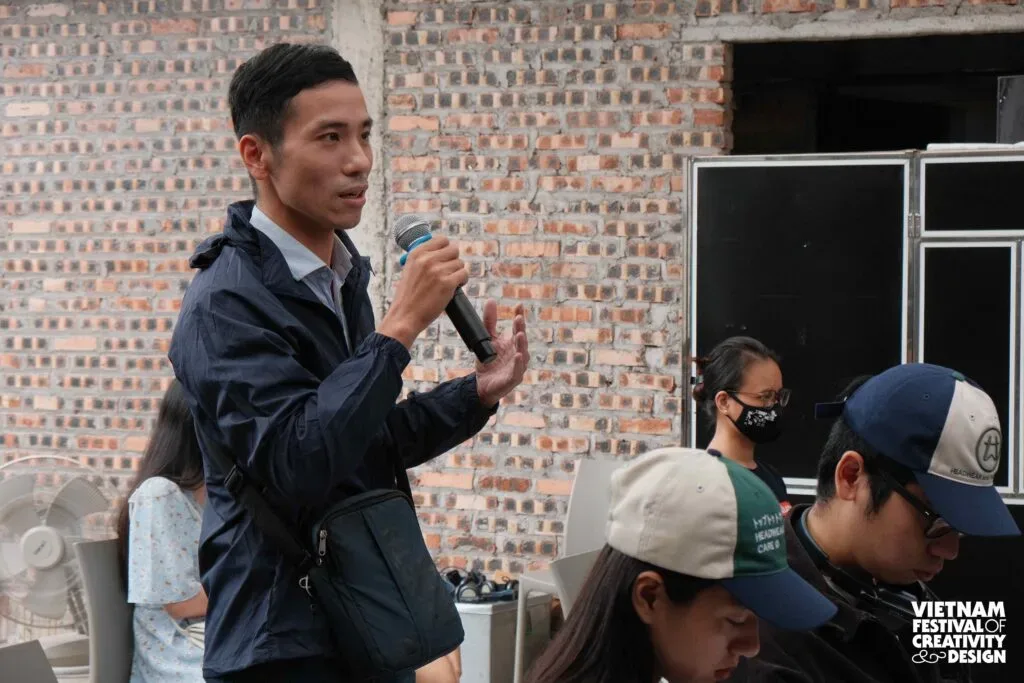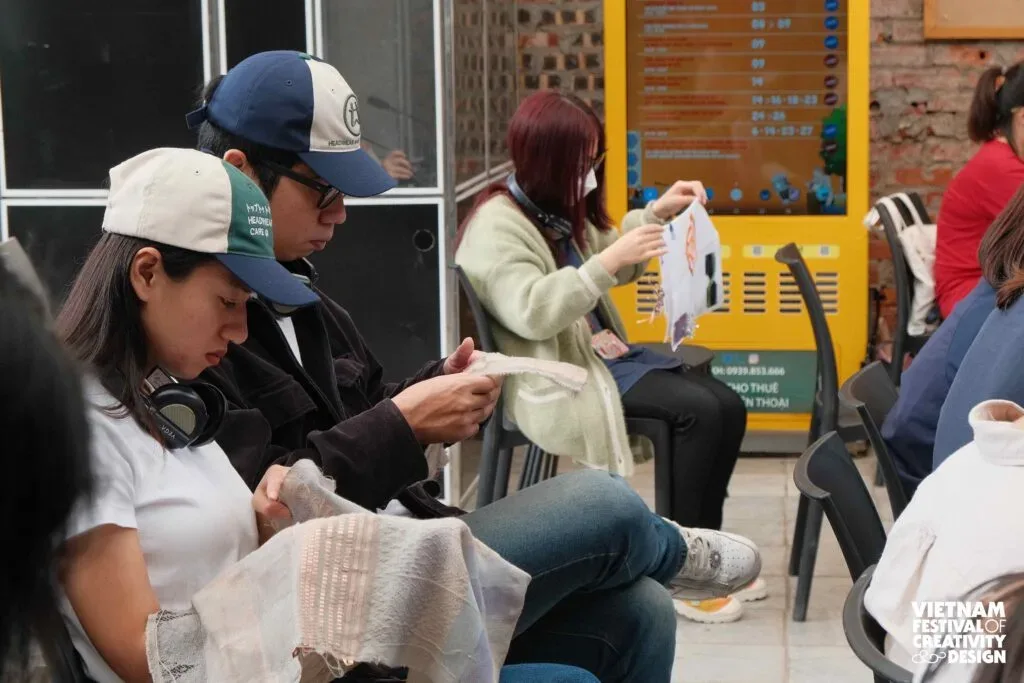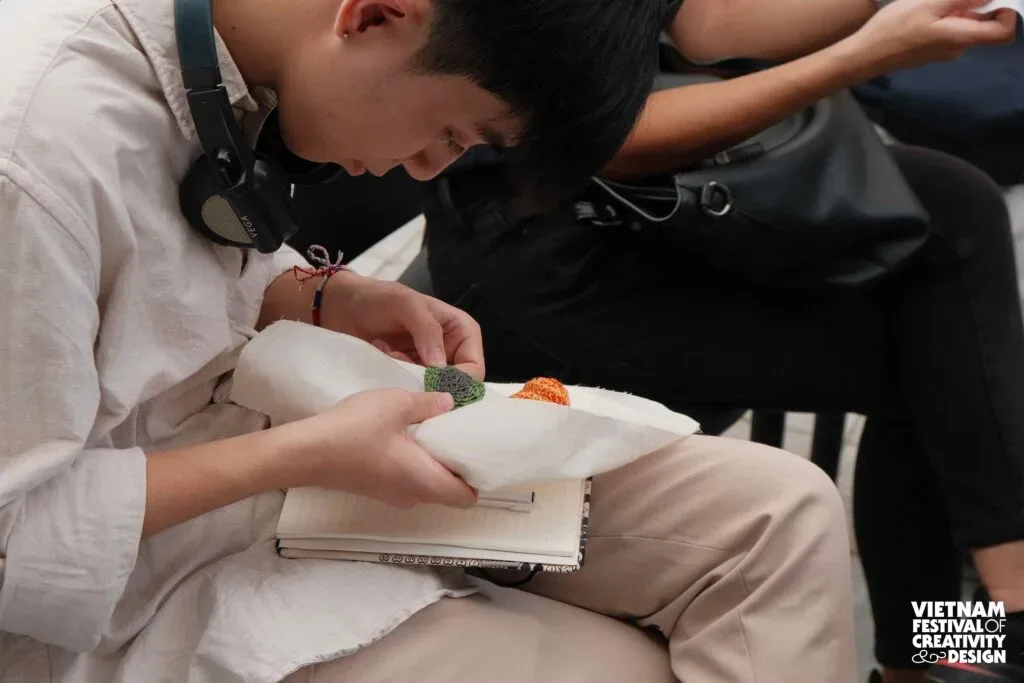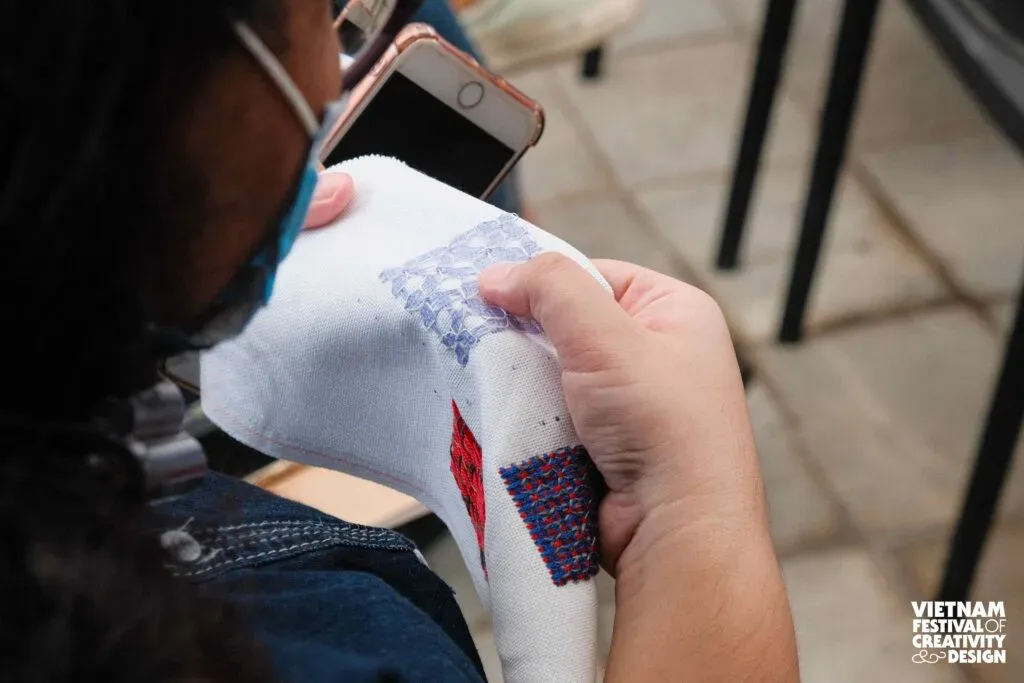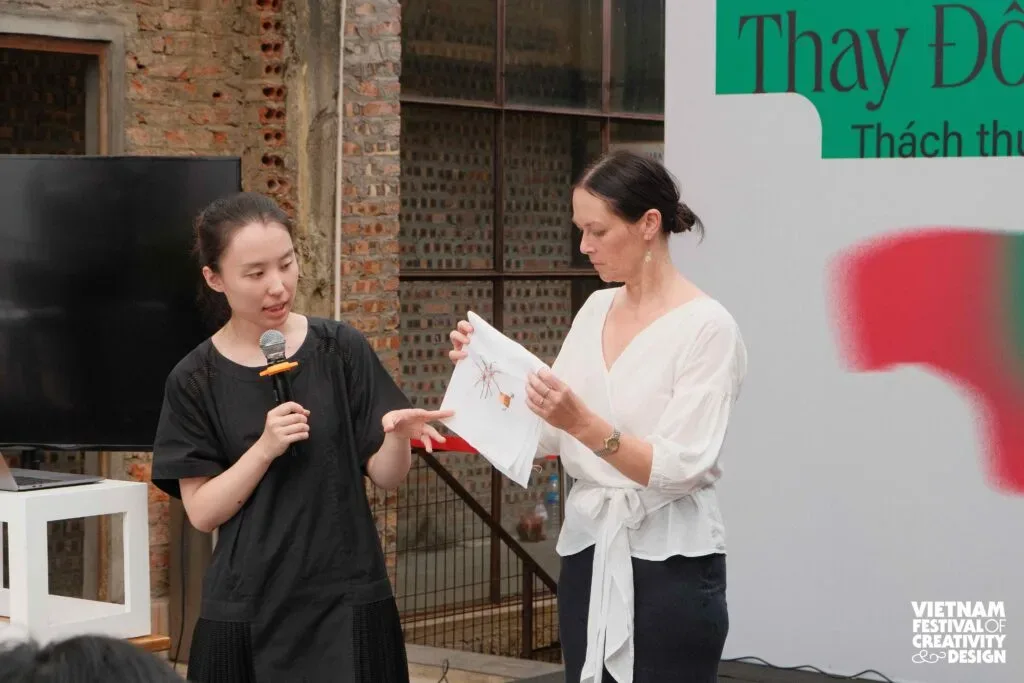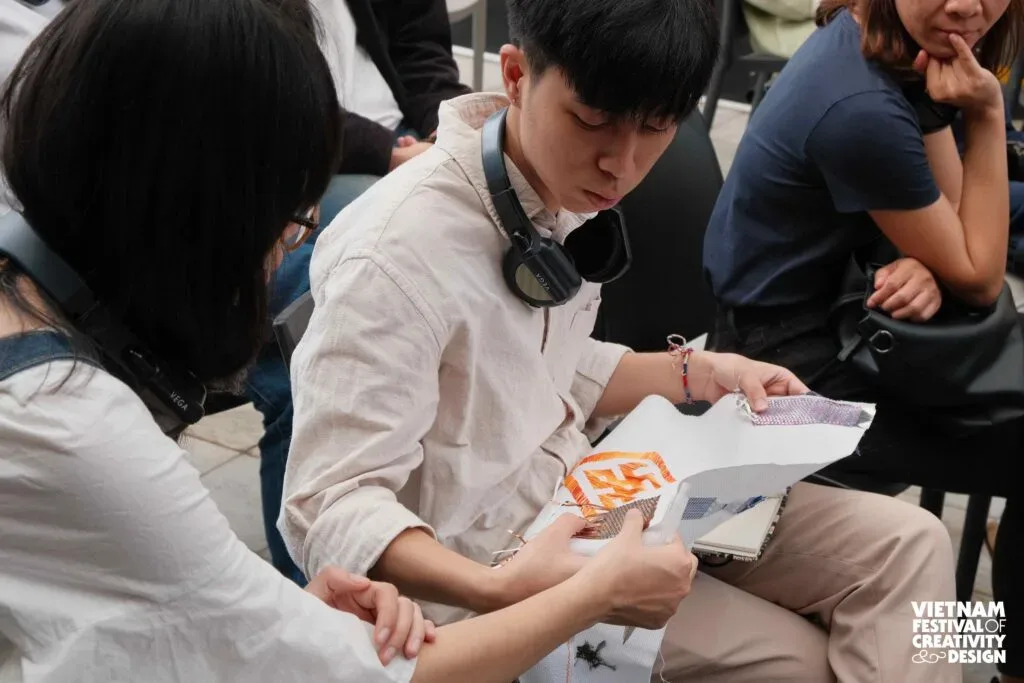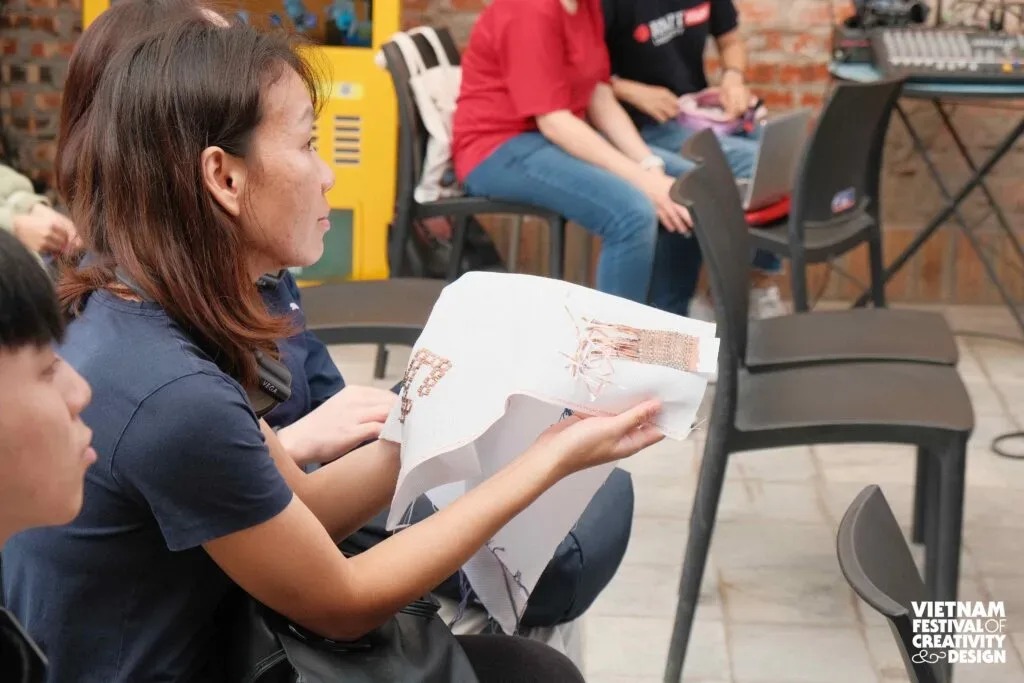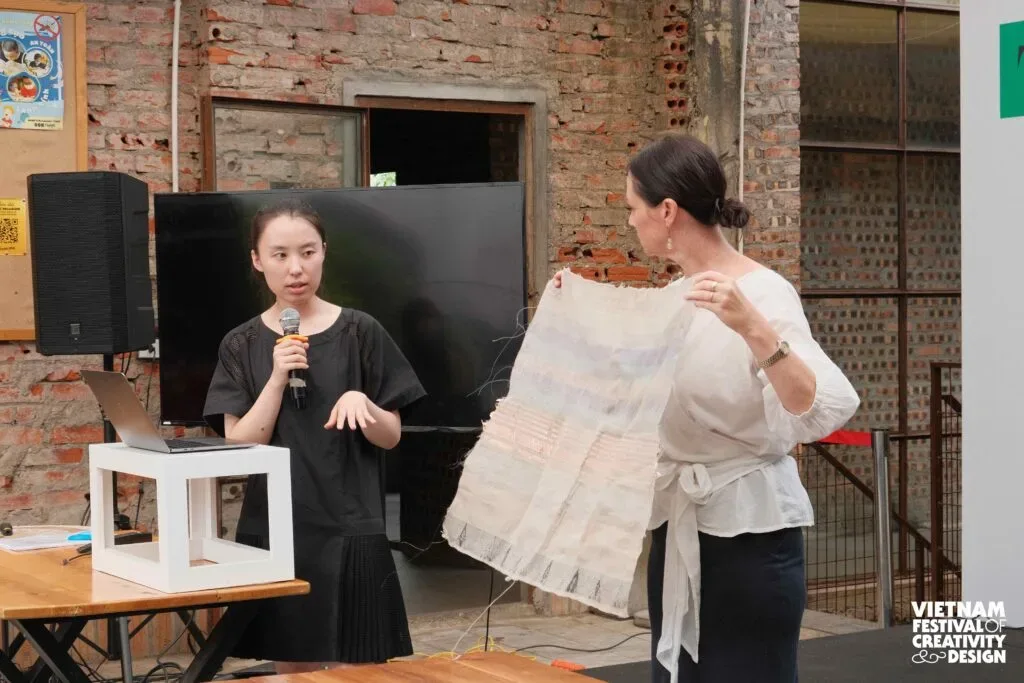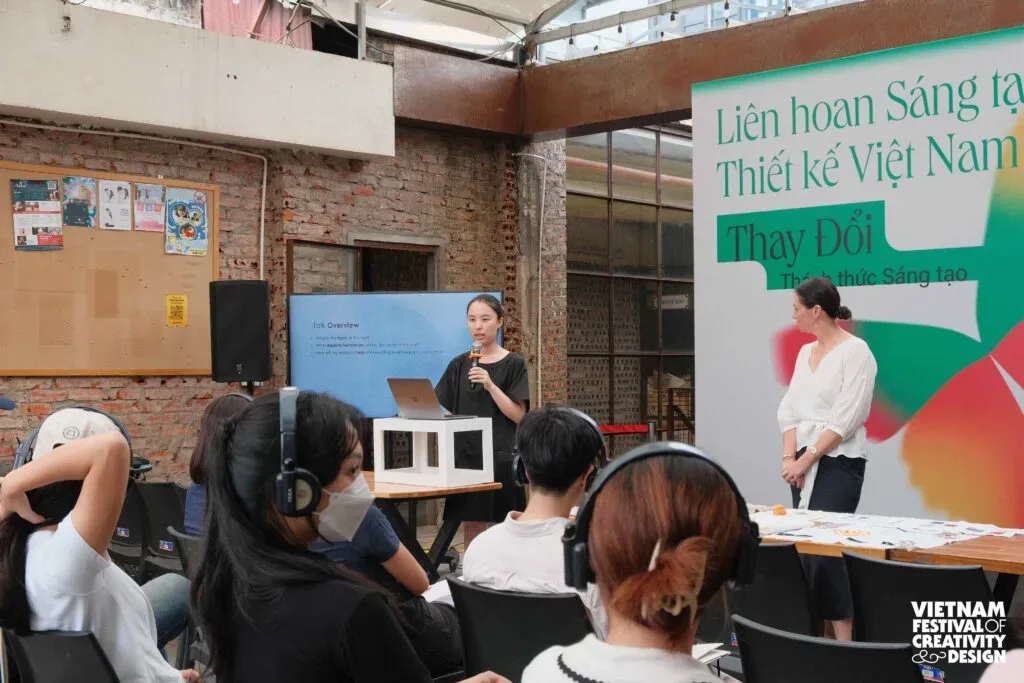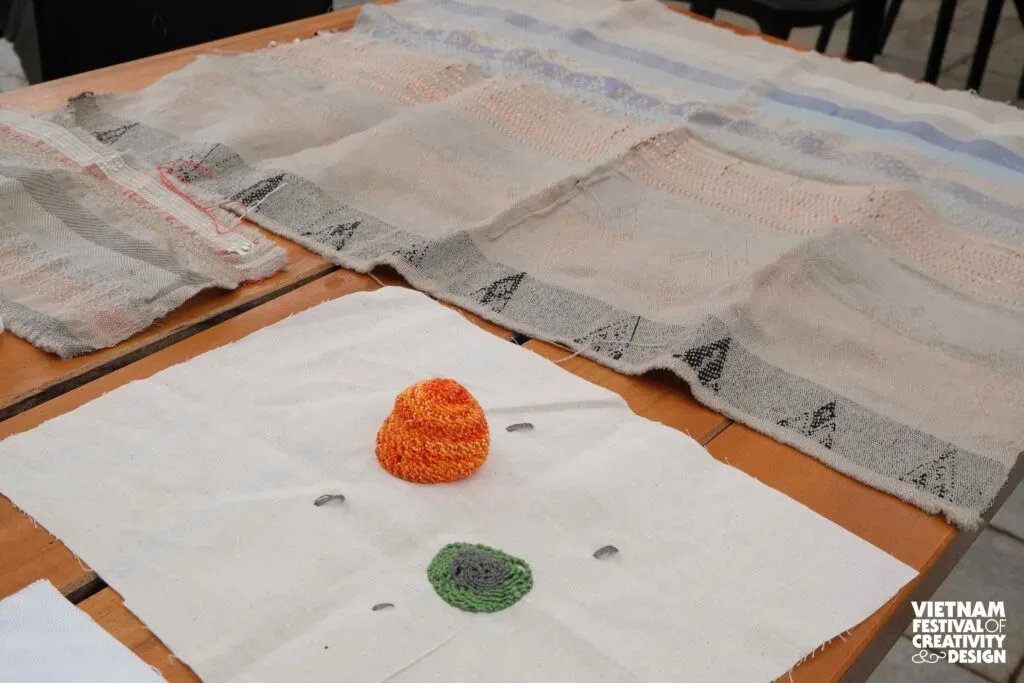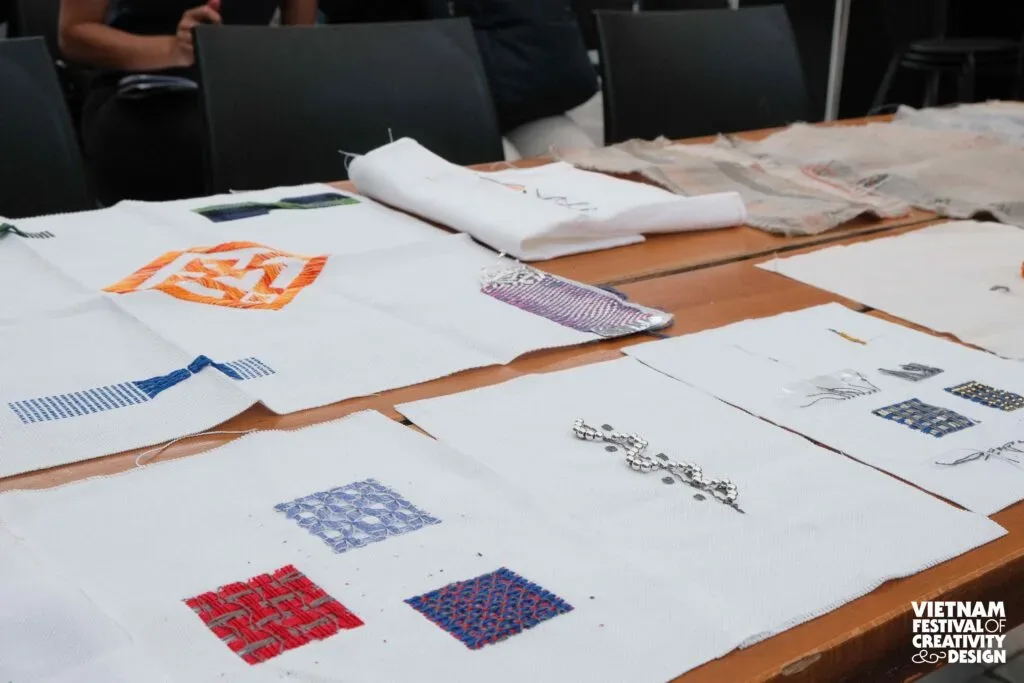On a Saturday morning on 11.11.2022, the talk Textile expressions: Experimental approach using new technologies to interpret traditional storytelling through making with researchers from the leading universities in design – RMIT University Vietnam and Auckland University of Technology, New Zealand took place, presenting numerous discoveries and useful knowledge from the speakers’ PhD study.
PhD candidate Leona Wang was the lead moderator of the event. She said that the disappearance of numerous heritage crafts was not only our loss of beautiful craft products, but also the vanish of the stories that make us who we are and our history. With the traditional textile industry facing the risk of disappearing, she believed that a study in this field is urgent and necessary. Her research, therefore, focuses on technology application in handmade embroidery products of ethnic minorities in China, such as e-textile making to preserve artistic and cultural heritage, while also inspiring young people and suggesting new directions for craft-making in educational institutions that offer training in this field.
The speaker also pointed out 05 root causes that left traditional crafts “abandoned” in the modern context: education, employment, ageing population, awareness and lack of raw materials. In particular, in the post-COVID economic downturn, the craft industry has to face even more difficulties and challenges to survive. According to a study published by the Traditional Craft Association in May 2021, as many as 274 crafts were threatened with “extinction”.
During the presentation, PhD candidate Leona Wang also introduced several ancient handicraft products, such as dragon motifs on a prince’s attire for special occasions, or metaphoric combinations of different animal images that created the unique meaning of the attire itself. On the other hand, ethnic minorities use the motifs and patterns on their textiles as a record of their stories. The Miao wedding dress is a prime example of how storytelling factors are expressed in their cultural and traditional products. Lanjuan, the female leader of this ethnic group, used coloured thread to record the important milestones throughout the course of their history and culture. This handmade product bears traditional values it blends personal perspectives and memories into the details of national costumes as a reminder of every important puzzle piece of history. Interestingly, the work employs tin embroidery – a Miao technique: They use tin strands as threads to create embroidery on the product, and each family has its own key pattern.
The speaker then introduced the garment technology of e-textiles. She defined it as a technology that uses the human body as the frame for product design. This concept also has multiple alternative names in different fields such as wearable electronics, smart clothes, or e-textiles in interactive accessories.
An application easily attaches electronic devices to fabrics, and then they are programmable. As an example, there is a programmable fabric developed by computer scientists that is also the first e-textile product that is able to process and produce stories as well as analyse activities. Leona also introduced a fun, interactive, tactile fabric. It was a conductive fibre textile product (by 3D printers with traditional sequins, alongside conductive and non-conductive plastic). Touching or pressing on this conductive plastic will send a signal to a computer, which senses the changes in the shape of the fabric material.
Event participants also had the opportunity for direct interaction with samples of the patterns on ethnic minority costumes, and from a research project on interactive technology applications. The audience also enjoyed a short film to better visualise how interacting with e-textiles can create sounds or vibrations in the material.
Following the experience and presentation on the research, Professor Frances Joseph, Associate Professor Donna Cleveland and PhD candidate Leona Wang answered the audience’s questions about the applicability of this technology in future, as well as giving guidance to young students participating in the talk on how to choose the right reference source for their research paper.
At the end of the talk, the speakers had one-on-one exchanges with event participants about handmade embroidery products, and the preservation of cultural heritage through new and modern storytelling methods that resonate with the audiences today.
